“Baden-Württemberg. Where ideas work.” That’s what it says on the cup with state emblem that Peter Herrmann is sipping coffee from. He’s sitting in his office. Next to the desk with the flag of Baden-Württemberg is a crib for the days when his offspring comes along to work. One notices quickly that this is a Swabian family business starting up. “We’re actually a classic systems service provider for large medical technology companies,” says Bemotec’s junior boss with a Swabian accent. His father, Siegfried Herrmann, started the company in his garage and built it up to the 60 employees it has today. So far, so typical — the kind of story many mid-sized companies could tell. But Peter Hermann still has a special story to tell. He has founded a start-up to market a product he developed: a walker with electric drive, the “beactive +e.”
Passion for tinkering
The story actually begins on the golf course. “My father is an avid golfer, and he has a trolley with an electric motor,” says Peter Herrmann. “On the way home from golfing, it occurred to him that such a drive ought to be possible on a walker. He’d already been interested in mobility for seniors for a while.” Siegfried Herrmann’s tinkering instincts were awakened. At home, his beloved trolley had to make the ultimate sacrifice as a result. “We took it apart, got a typical walker at a local medical supply store, removed its wheels and attached the trolley’s control unit,” recalls his son and has to laugh. It quickly became clear that the idea was good, but implementing it wasn’t so easy. The tubular structure of a standard walker was too flimsy, and operating it would be too complicated for elderly people.
Clever details
A chance encounter rescued the project. At an innovation event held by the local chamber of commerce, Peter Herrmann came across Tricon Design AG, a company specializing in transportation design. It has designed subways in Hamburg and Shanghai. “It was clear to me right away that we needed to talk to them.” That was when the e-walker really started to roll. Working with the experts, Bemotec developed a design study with special focus on the walker’s drive, ergonomics and operating aspects.
“It occurred to me that a drive like the one on my golf trolley ought to be possible on a walker, too.”
Siegfried Herrmann, Bemotec
That was mostly uncharted waters for the team. “For most of our customer orders, we don’t get involved until later and don’t have to worry about fundamental issues,” says Peter Herrmann. Three wheels or four ? How can we make the walker stable ? How should the perfect hand grip look ? The developers looked for answers to these questions. The result: four wheels, a sturdy frame made of rectangular tubing, and an ergonomic grip. The “beactive +e” costs between 3,000 and 3,500 euros and weighs 20 kilograms — and it looks pretty futuristic when it rolls quietly humming into a room. “But it’s not supposed to make a high-tech impression; that’s something that puts off elderly people quickly,” notes the junior boss. And that’s why the technology is all under the hood.
Solid support for therapy

“Baden-Württemberg. Where ideas work.” That’s what it says on the cup with state emblem that Peter Herrmann is sipping coffee from.
The frame’s sturdiness is particularly important to Herrmann’s biggest customer segment. “We currently do 80 percent of our business in therapy,” he says. “Strokes, multiple sclerosis or Parkinson’s patients often suffer from impaired balance and have an unsteady gait. A lightweight walker is exactly the wrong thing for them.”
For the drive, the Bemotec team decided on an EC motor with angular gear from ebm-papst ZEITLAUF, which the specialists adapted to Bemotec’s special requirements. For Bemotec, smooth movement was especially important. “The users also have to be able to move the walker without motor support. That’s no problem with the adapted angular gear. You can just hear it turning, but you can’t feel it,” says Peter Herrmann. “Energy efficiency was also important because of the range.”
The battery has a lifetime of up to ten hours, so the walker can reliably get through a full day of therapy without recharging. Thanks to the motor’s compact design, it was also easy to integrate it into the walker’s frame without limiting the user’s freedom of movement. Herrmann and his developers selected the individual components from ebm-papst’s modular system, a simple and convenient solution.
Adjusts automatically
Users can select from three different speeds depending on their condition and the terrain, and therapists can program individualized exercise routines. Once programmed, they can be stored on an integrated RFID chip. With a card, the walker then adjusts contactlessly to each patient. Especially for patients with one-sided paralysis, that offers completely new opportunities, as Herrmann explains: “With a normal walker, they’d go in circles. But we can individually adjust the speed at which each wheel is driven.”
The features of the “Beactive +E” by Bemotec
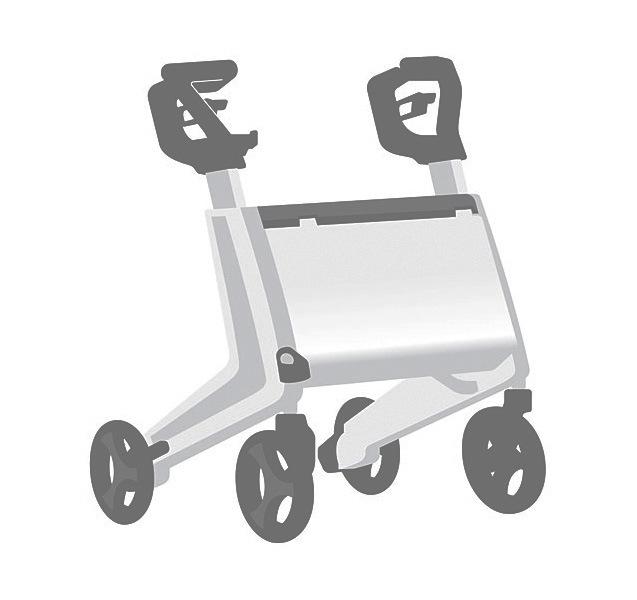
During the ergonomic and technical design, the inventors had to consider the requirements for TÜV certification. “Every change directly affects the product approval,” says Herrmann. And he took that seriously. “For a class 1 medical product, you can actually issue the approval yourself. But we’re Swabians and want to be able to keep sleeping at night, so we agreed that things should be done right and we cooperated with TÜV Süd from the beginning.”
Sometimes that was difficult with a product that hadn’t existed before. There are standards for electric wheelchairs and for normal walkers. But the walker from Bemotec is somehow both. “We were done with the actual development in two years, but the approvals cost us another year.”
Something ventured, something gained
Bemotec’s chief couldn’t always play it safe. “For design protection reasons, we always showed our prototypes at trade fairs at a very early stage. We knew that if we didn’t go to market now, somebody else would. And we wanted to be first,” he says. The Rehacare trade fair in Düsseldorf in 2013 was to decide whether Bemotec would pursue the walker project or not. “The guests overran us. It was crazy,” says Peter Herrmann, who is still impressed even today. “There was no question anymore of whether we’d continue or not. Sometimes you have to accept such business risks. It worked out for us.”
But as he admits, the starting situation was somewhat more comfortable than for other start-ups that have no corporate financial backing. “They have to work really hard to scratch the money together. We’re proud that we were able to manage this development work costing millions on our own,” he says. “We didn’t get any research and development grants. For us it was clear from the beginning that if we develop anything, we’ll do it ourselves.”
“We were done with the actual development in two years, but the approvals cost us another year.”
Peter Herrmann, Bemotec
So why did he found a start-up at all ? “It was important to us to keep the speed up. We had a small group inside the company that worked on the product completely independently of day-to-day business. We would have been slower if we hadn’t done that.” In addition to the “beactive +e,” the “belifted” sofa lifter — another product developed by the inventors from Reutlingen — also found a home under the “bemobile” start-up brand. With the modern brand concept, Peter Herrmann wants to distance himself from the old-fashioned image of the walker. Its technical features underscore that ambition. For today’s modern seniors, the “beactive +e” is equipped with a USB charging port where they can charge their smartphones.
Moving on its own soon
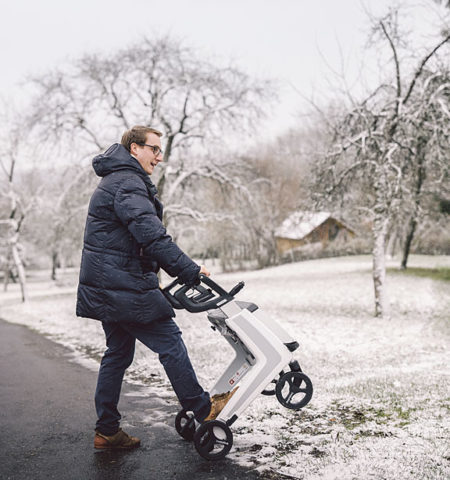
Thanks to the motor’s compact design, it was also easy to integrate it into the walker’s frame without limiting the user’s freedom of movement. (Photo: Philipp Reinhard)
Bemotec is working with universities and research institutes on further innovations. “Now the walker can detect stairs, stop, emit acoustic signals and turn around. Completely on its own!” says Herrmann proudly. “It can also see whether a traffic light is red or green.” The application isn’t ready for production yet, but the developers are working with the University of Tübingen to change that soon. He is particularly impressed by the way the scientists work on the product. “They’re not using sensors costing millions, they’re constantly looking for even more economical solutions that we can use in mass production later.”
Tinkering in isolation is a thing of the past; Peter Herrmann is convinced that networking is the future, and he is relying on a local exchange of expertise, for example with Bosch eBike Systems, which is setting up a complete e-bike city in a neighboring industrial park. “You have to open up, and of course you always reveal a bit of expertise by doing that, but it’s the only way to get such a project on its feet for the long haul.”
He’s also taking a new approach with an app through which the walker can be steered and programmed. “In the end customer sector, digitalization is playing an even bigger role than in machinery,” he says, adding with a laugh, “My father always says it will get strange if we ever have more programmers than engineers sitting here.” He has now bought himself a new golf trolley — with electric drive, of course.
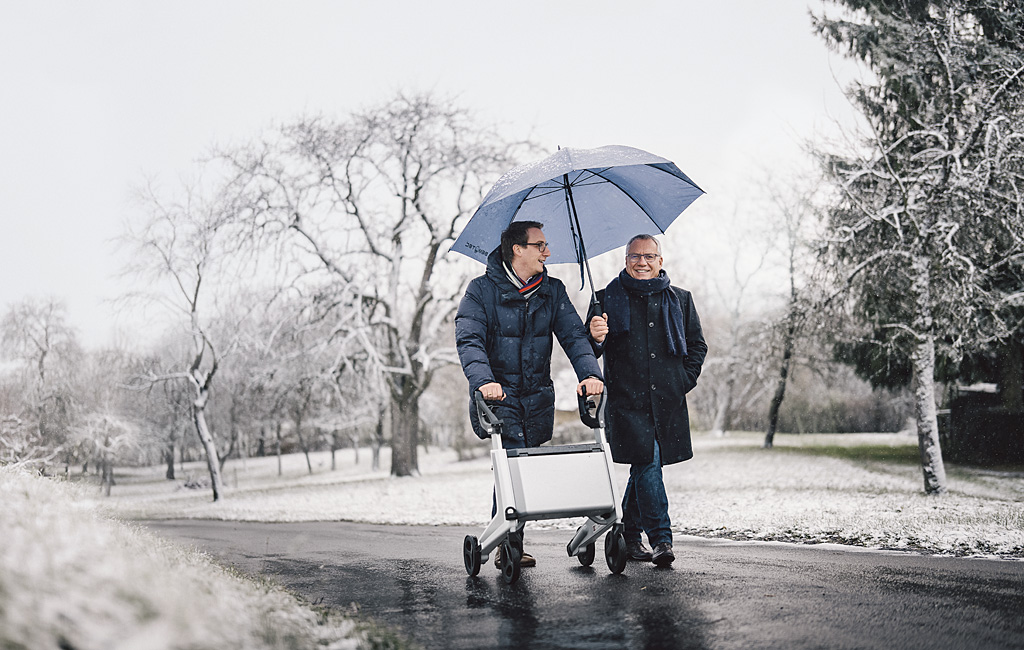
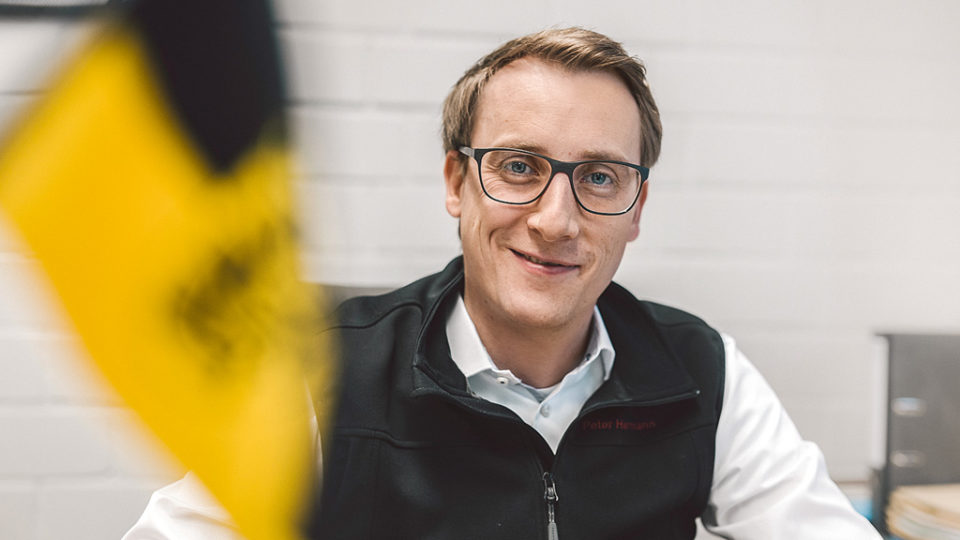


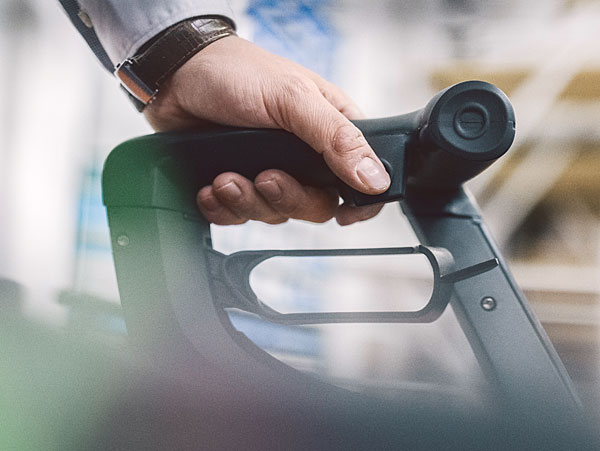
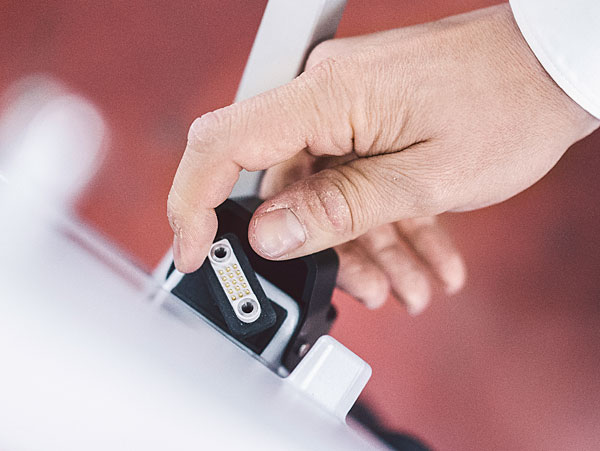
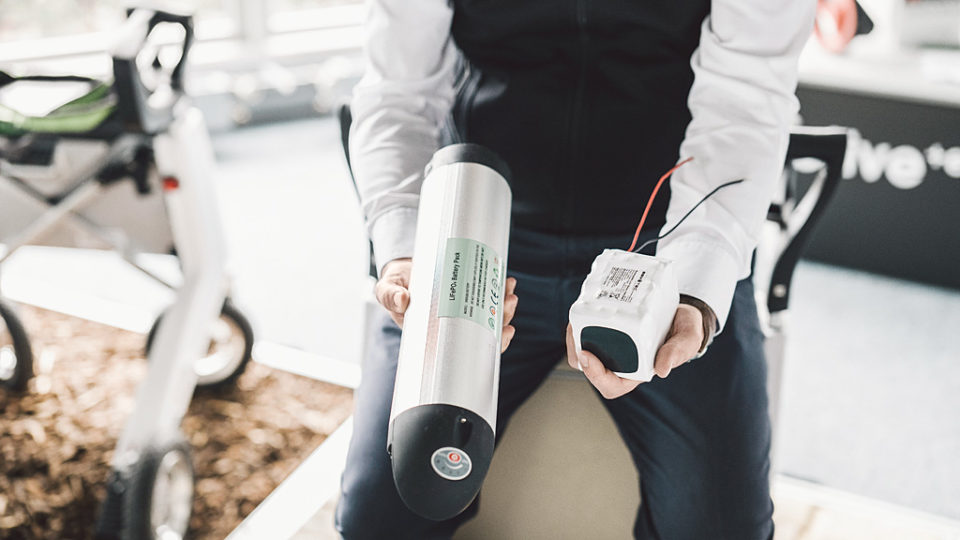



Leave a comment